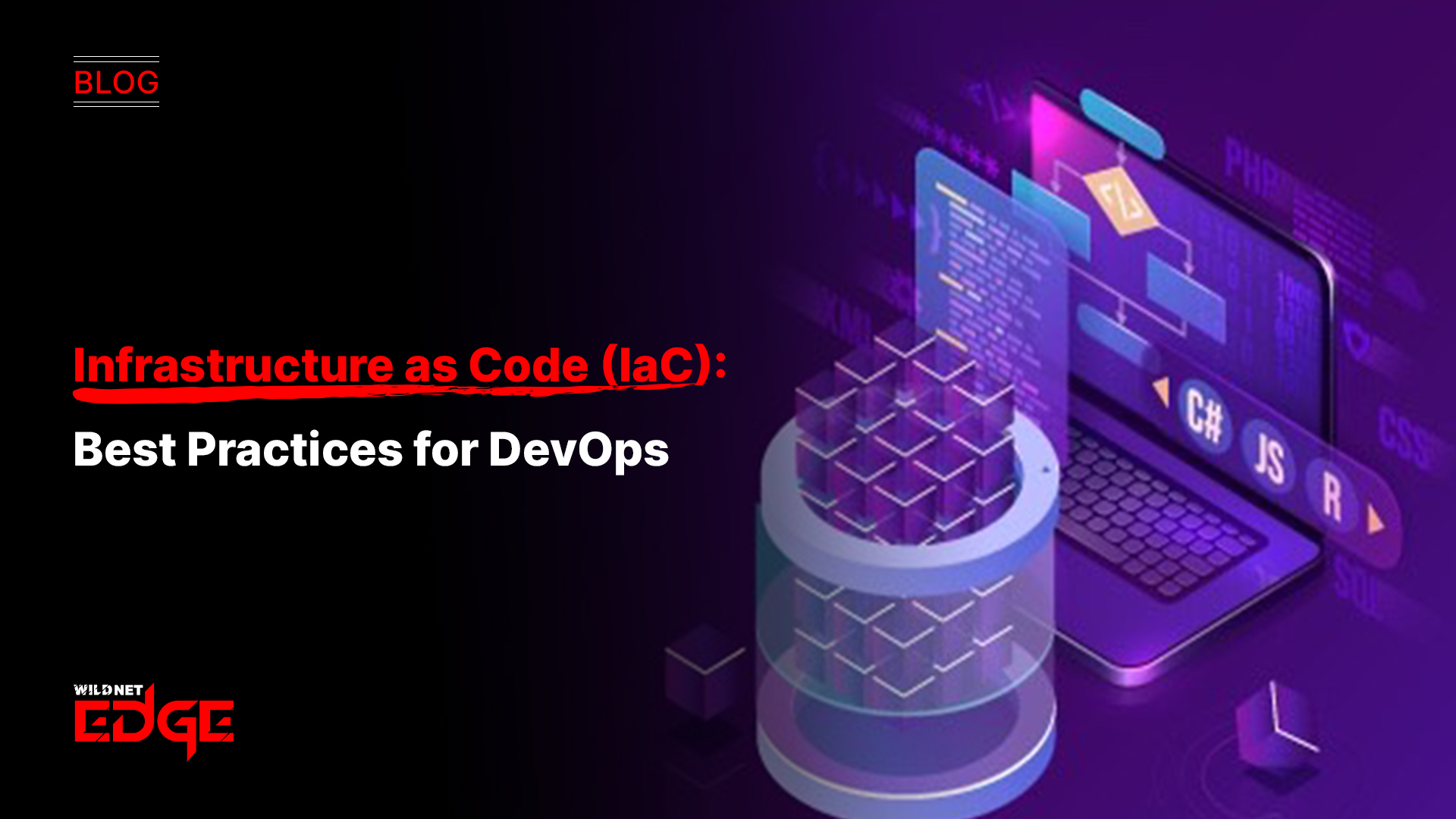TL;DR
The article explains why Infrastructure as Code is essential for modern DevOps Web Application Development in 2025. It focuses on Terraform as the leading multi-cloud provisioning tool and outlines crucial infrastructure as code best practices. Readers will learn to implement modularity, secure state management, Policy as Code (PaC), and integrate IaC into their CI/CD pipelines to ensure faster, more consistent, and highly secure cloud environments. The writer emphasizes that treating infrastructure like version-controlled code is the key to minimizing risk and maximizing scalability.
Are you facing the problem of slow and inconsistent infrastructure? Well, you are not the only one. The pain of manually setting up servers and different environments is very much real. Infrastructure as Code is the cure, it brings about automation in provisioning, increases consistency, and hurries up releases. This guide leads you through the best practices of infrastructure as code, concentrating on Terraform and significant infrastructure as code tools to change your DevOps Web Application Development lifecycle.
The Game-Changer: What is Infrastructure as Code?
Infrastructure as Code (IaC) simply means the servers, networks, and databases for application code. Rather than proceeding through the consoles one click at a time, you instead manifest the whole infrastructure via configuration files. Environments thus become version-controlled, testable, and repeatable. Such is the role of IaC in DevOps for modern Web Applications.
Benefits of Infrastructure as Code
Implementation of IaC leads to drastic enhancements in the operations.
- Speed and Velocity: Resource allocation now takes minutes instead of days. This results in the entire development pipeline being sped up.
- Consistency: “Configuration drift” is a thing of the past. All environments, Dev, Staging, Production, are one and the same, thus eliminating those annoying “it works on my machine” problems.
- Cost Efficiency: Get resources when needed and shut them down when not. This way, you are saved from paying for unnecessary cloud use.
- Reduced Risk: Changes undergo reviewing and auditing in Git similar to application code which lessens the possibility of human errors and Boosts the security.
- Scalability: The Entire architecture can be easily and quickly copied for new geographical locations or for increased load.model-driven approach, ideal for managing large-scale infrastructure with robust reporting and compliance features.
Comprehending DevOps Provisioning Devices and Technologies
Current infrastructure as code utilities are mainly classified into two primary types: Provisioning and Configuration.
Popular Technologies & Tools
| Category | Tool | Primary Use | Language | Key Feature |
| Provisioning | Terraform | Building and managing cloud infrastructure (VMs, networks, databases) | HCL | Multi-Cloud and Declarative |
| Configuration | Ansible | Setting up software, installing packages, and managing service state on existing VMs | YAML | Agentless Simplicity |
| Configuration | Chef/Puppet | Complex, large-scale system configuration management and compliance | Ruby DSL/Declarative DSL | Enterprise-grade management |
Why Businesses Require Infrastructure as Code
In the cut-throat competition of 2025, businesses cannot afford delays caused by manual processes.
- Faster Time-to-Market: Instant creation of test environments speeds up the delivery of new features.
- Compliance and Audit: With IaC, there is an immutable audit log in Git, which easily meets the requirements for regulation.
- Disaster Recovery: With an overall infrastructure setup defined in code, it is possible to reproduce your entire environment from the ground up in a different region fast and reliably.
This functionality is a must-have for those who are looking to develop scalable DevOps Web Applications.
Which is Better: Terraform vs. CloudFormation
Both Terraform and AWS CloudFormation are powerful infrastructure as code tools. They serve the same purpose but have key differences.
| Feature | Terraform | AWS CloudFormation |
| Cloud Support | Multi-Cloud (AWS, Azure, GCP, etc.) | AWS Only |
| Language | HCL (HashiCorp Configuration Language) | JSON/YAML |
| State Management | External State File (S3, Azure Blob) | Managed by AWS Service |
Best Practices for Infrastructure as Code Implementation
Adoption of IaC is successful only with discipline and observance of key iac best practices.
1. Version Control and Code Review
- Git is King: Keep all IaC files in one Git repository. Every change is to be acknowledged.
- Mandatory PRs: Direct merging to the main branch of your project should never happen. Use Pull Requests for peer reviews, supporting quality and security checks on all scripts for infrastructure as code.
2. Embrace Modularity and Reusability
- DRY Principle: Stick to Don’t Repeat Yourself. Make terraform modules that can be used repeatedly for standard VPC and security group like patterns.
- Example: Create a single network-module and apply it to your Development, Staging, and Production environments by changing only the variables like the CIDR block.
3. Secure State Management
- Remote Storage is a Must: Do not keep your Terraform state file on the local machine. Secure remote backends like AWS S3 with encryption and versioning enabled should be used for this purpose.
- State Locking: Apply state locking e.g., using a DynamoDB table with S3 to make sure that no two people are making changes at the same time, thus preventing corruption of the state file.
4. Policy as Code (PaC)
- Automated Governance: Employ PaC tools such as Open Policy Agent (OPA) or HashiCorp Sentinel. These tools enforce organizational policies before the infrastructure is deployed.
- Example: A policy can be drafted that automatically fails the deployment if a developer attempts to provision a machine without the mandatory cost-center tagging. This is essential for security in infrastructure as code devops.
Case Studies
1. Global Retailer Reduces Deployment Time by 80%
A major international retailer needed to rapidly spin up and tear down isolated environments for their peak-season load testing.
Problem
Manually provisioning a full environment took two weeks.
Solution
They implemented Terraform modules to define their entire microservices architecture on Azure.
Result
2. FinTech Startup Achieves Instant Audit Compliance
A fast-growing financial technology company needed to prove every infrastructure change was secure and auditable for banking regulations.
Problem
Auditing manual changes was a constant, time-consuming bottleneck.
Solution
They enforced Policy as Code (OPA) integrated into their CI/CD pipeline, ensuring no resource was deployed without proper encryption tags and restricted network access.
Result
Audit-readiness became instantaneous, as their Git history was their audit log. This accelerated their compliance process by 90%.
Conclusion
Following the prescribed practices means eliminating the manual steps that drive people crazy. Thus, you will gain quicker, more consistent, and unparalleled control over your cloud environments. Do not allow manual provisioning to be a bottleneck in your pipeline or to cause configuration drift. Ready to leave behind the manual way of cloud management and enjoy the full potential of an automated, secure, and repeatable infrastructure?
Get on board with WildnetEdge now and not only implement top-notch Infrastructure as Code tactics but also gain the ultimate DevOps skill!
FAQs
Q1: What is the difference between Terraform and Ansible?
Terraform is a tool that provision the creation of the infrastructure itself, e.g., a virtual machine. Ansible is a tool for configuration management; that is, it configures the software that runs inside the virtual machine, e.g., Nginx installation or user creation. Both are vital for DevOps applying the modern infrastructure as code principle.
Q2: What is meant by ”State Drift” and how does Infrastructure as Code eliminate it?
State drift occurs when the current infrastructure resources are no longer the same as what is in the code. For instance, a developer changes a server’s security group manually. IaC eradicates this issue because the desired state is being kept track of by the Terraform state file. A plan can detect the drift and automatically correct it back to the state defined in the infrastructure as code scripts when it is run.
Q3: What are the best practices for securing IaC?
Use external vaults for secrets, apply the principle of least privilege, and integrate security checks into CI or CD pipelines.
Q4: Can IaC support multi-cloud environments?
Yes. Tools like Terraform natively provision infrastructure across multiple cloud platforms consistently.
Q5: How do CI or CD pipelines integrate with IaC?
CI or CD pipelines automate testing, validation, and deployment of IaC scripts, ensuring controlled and repeatable infrastructure changes.

Nitin Agarwal is a veteran in custom software development. He is fascinated by how software can turn ideas into real-world solutions. With extensive experience designing scalable and efficient systems, he focuses on creating software that delivers tangible results. Nitin enjoys exploring emerging technologies, taking on challenging projects, and mentoring teams to bring ideas to life. He believes that good software is not just about code; it’s about understanding problems and creating value for users. For him, great software combines thoughtful design, clever engineering, and a clear understanding of the problems it’s meant to solve.
 sales@wildnetedge.com
sales@wildnetedge.com +1 (212) 901 8616
+1 (212) 901 8616 +1 (437) 225-7733
+1 (437) 225-7733































